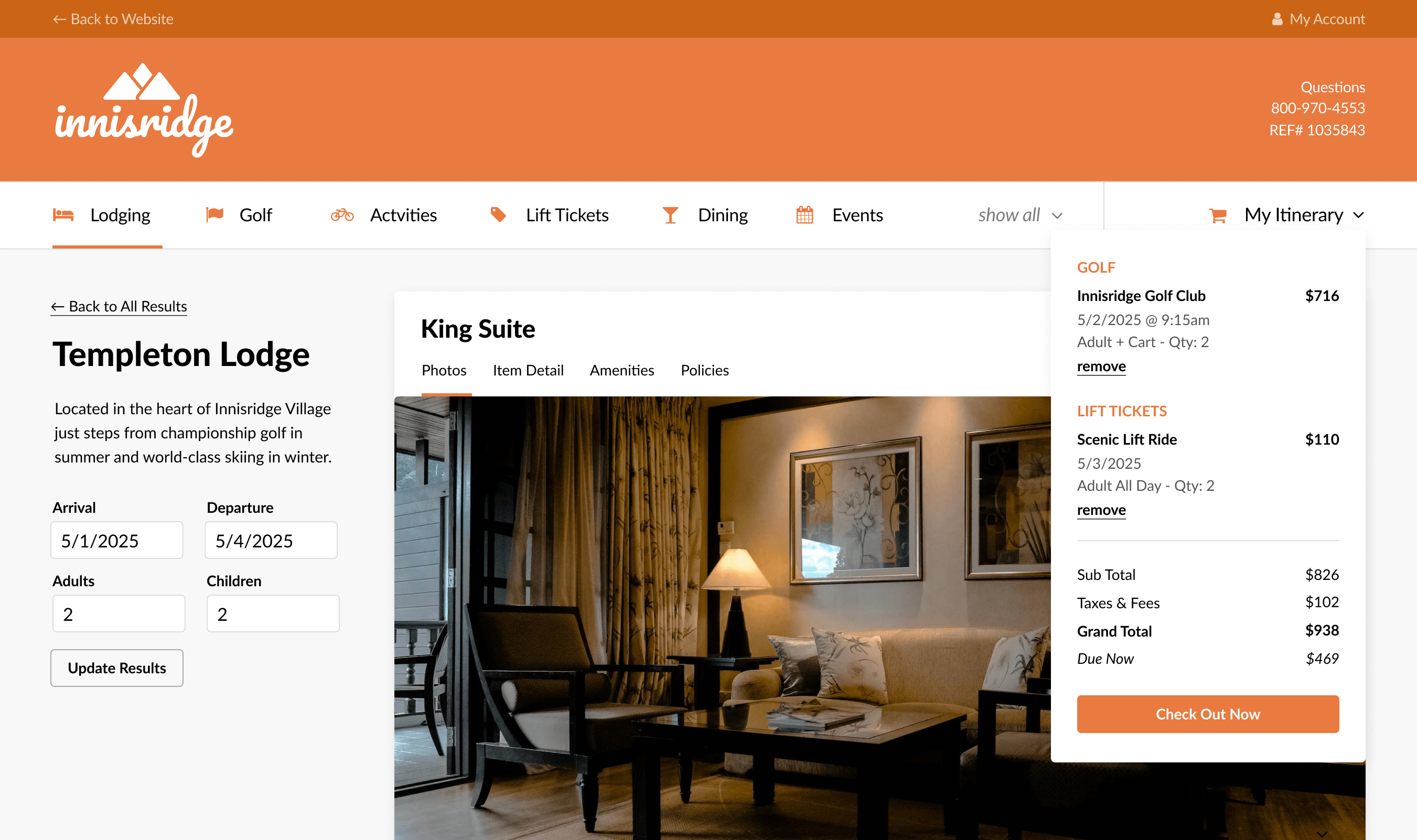
Trends

Snowfall, rates, and fluctuations in economic policies all played a role in the declines posted for both booking pace and winter season occupancy during February in the most recent DestiMetrics* monthly Market Briefing released yesterday. While the second half of the six-month season from February through April is looking somewhat better than the first half of the season and is currently comparable to last season, bookings and occupancy softened from where they were last month even as aggregated daily rates inched up, driven primarily by increases in the luxury-priced category of rooms at $851/night or more.
Occupancy and rates were both up in February
After a dip in occupancy in January, good snowfall in many regions changed the dynamic during February and occupancy for the month was up 3.4 percent in a year-over-year comparison to last February. Snow also helped tick up the Average Daily Rate (ADR) which gained a modest 1.6 percent for an average rate of $727/night aggregated across all property types. The growth in both occupancy and rate delivered a five percent gain in revenue for the month compared to last February. But despite the snow-induced boost, the pace of bookings made in February for all arrival dates dipped for the third consecutive month—a slight 1.2 percent year-over-year decline in bookings for arrivals in February through July.
Full winter still holding
Occupancy for the full winter season from November through April including actual and on-the-books reservations for the remainder of the season are currently eking out an 0.3 percent seasonal gain over last year at this same time with the back half of the season accounting for the modest growth. Room rates are a bit stronger, up a slight 1.8 percent for an aggregated $640/night and up in five of the six winter months with the most notable increases appearing in April—up 5.5 percent, and January up 3.7 percent. The combination of higher rates and occupancy is delivering a two percent increase in seasonal revenues.
“Although this season is managing to hold a bit ahead of last year, we once again saw the gains in occupancy soften from last month—just as they softened in January from December,” noted Tom Foley, senior vice president of Business Intelligence for Inntopia. “But decent snowfall in February in the Central Rockies and other regions provided an offsetting boost to room rates and in ‘travel math’ that means revenue was essentially unchanged. Plus, economic news and policies are putting consumers a bit off balance as markets—and consumer confidence–downshifted.”
The Economy
*In yet another reversal, the Dow Jones Industrial Average (DJIA) backtracked on January’s substantial gain and shed 703.75 points during February. The 1.6 percent decline marked the second monthly drop for the index in the past three months. Shifting foreign and trade policies led to jittery markets as gains in the early part of the month were erased during the selloff at the end of the month. “Consumers were responding positively to economic conditions during the third and fourth quarter of 2024, but the downward pressure we’re seeing in markets lately is being perceived as a threat to their savings, investments, and long-term stability,” noted Foley.
*Following the downturn in markets, the Consumer Confidence Index (CCI) released by the Conference Board and the Consumer Sentiment Index (CSI) from the University of Michigan both dropped sharply during February as consumers continued to react negatively to consumer prices and vacillating trade policies. The CCI fell a sharp 6.6 percent to finish at 98.3 points, landing below 100 points for the first time since September 2024. It also marks the largest drop in confidence since the summer surge in COVID-19 cases in June 2022. The CSI also dropped—losing seven points—or 9.8 percent. Respondents in both surveys reported concerns about prices and inflation as well as earnings and labor markets. Both indices are also now below their 24-month averages.
*News about unemployment and jobs was relatively stable during February with the Unemployment Rate inching back up to 4.1 percent from four percent in January. Job numbers for both December and January were revised with the December adjustment adding an additional 16,000 new jobs for the month for a very strong total of 323,000 new jobs. In contrast, January jobs were revised down by 18,000 for a more modest total of 125,000 jobs in that month. Job creation has softened in the past 12 months but remains stable while wages made gains—up 0.3 percent in February from January to bring them four percent higher than they were one year ago and outpacing inflation for the 22ndconsecutive month. The February jobs report includes the loss of approximately 10,000 federal workers as part of the Department of Government Efficiency (DOGE) efforts to reduce the federal workforce. DOGE actions are more likely to be more pronounced in the March data.
*Inflation eased in February from three to 2.8 percent although prices increased 0.2 percent during the month. The Consumer Price Index (CPI) posted its lowest month-over-month increase in prices since October and was somewhat lower than analysts expected. Grocery prices including staples like eggs were sharply more expensive while gasoline and airfares dropped—a benefit for the travel industry.
Watching…
Snowfall and winter storms have been uneven this season with on-again, off-again patterns across most of the West with occasional big storms followed by dry spells and warm temperatures. “Conditions have ranged from fair to excellent and everything in between, but it takes those really big snow events to trigger emotional and short-lead bookings and warmer weather in urban feeder markets has also been an issue,” observed Foley.
The impact of tariffs and a trade war with Canada is becoming apparent as Canadians changed their travel plans in a protest response to the implementation of the tariffs and threats of annexation, as well as the resulting economics of a significant drop in the Canadian dollar vs. the American dollar.
While Inntopia’s internal data analysis is preliminary, early data revealed a precipitous drop in the ratio between bookings and cancellations when tariff deadlines were initially announced. That drop carried through much of February before normalizing at the end of the month and the findings correlate closely to Statistics Canada’s data on Canadian cross-border travel declines.
“This is compelling, but this is a new data set that we don’t fully understand yet and our analysis isn’t conclusive,” cautioned Foley. “Data from Statistics Canada that includes cross-border traffic, showed clear signs of declining travel from Canada to the US by car—down a sharp 17.4 percent in January and an even more dramatic 23 percent in February. Our own internal data suggests similar patterns over similar dates, but we will have to monitor the situation over time before we can be more definitive about the impact of trade wars, specifically on mountain travel,” he continued.
Booking Pace declined for the third consecutive month—down 1.2 percent compared to last February following an 11.3 percent drop in January. Uneven snowfall and economic uncertainty are acknowledged as the primary culprits for the struggling pace.
Daily rates edged down slightly in absolute terms during February, slipping from $645/night in January to $640/night in February but in a year-over-year comparison is currently up 1.8 percent for the winter season.
Lodging terciles are all posting seasonal gains as of Feb. 28, but only luxury properties at $851+/night managed to improve their position during February, with revenue gains at those properties strengthening to a seasonal 5.3 percent uptick over last year. Economy–up to $400/night and Moderate rooms from $401 to $850/night both declined in revenue during the month but remain up modestly for the season, gaining 0.5 percent and 0.2 percent respectively.
“The luxury segment has dominated the lodging landscape this season, providing the backbone for the modest aggregated seasonal gains and largely reflects the economically insulated luxury traveler who is less impacted by economic volatility or uncertainty,” clarified Foley.
“There was no lack of drama for western mountain resorts during February as lodging properties grappled with sharp declines in consumer confidence, good but not great snow conditions, shrinking savings, and indications of a travel boycott from Canadians,” Foley explained. “The combination suppressed bookings during February but despite the challenges, the month was solid and overall season revenue remained remarkably stable while a late April Easter holiday offers the potential a strong finish for the season. Our task is now watching future bookings very closely for opportunities to attract visitors, assuming that some economic and consumer uncertainty is going to persist,” he concluded.